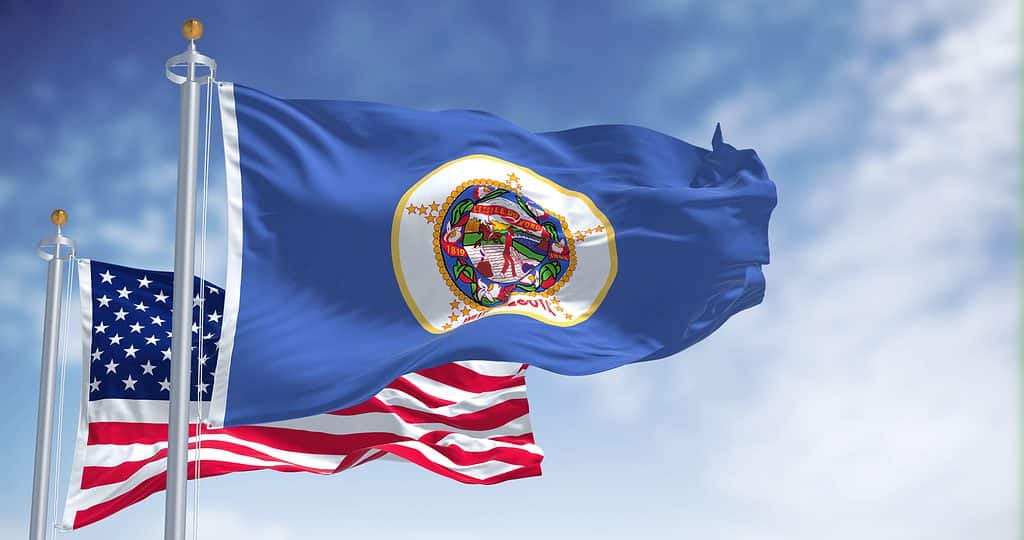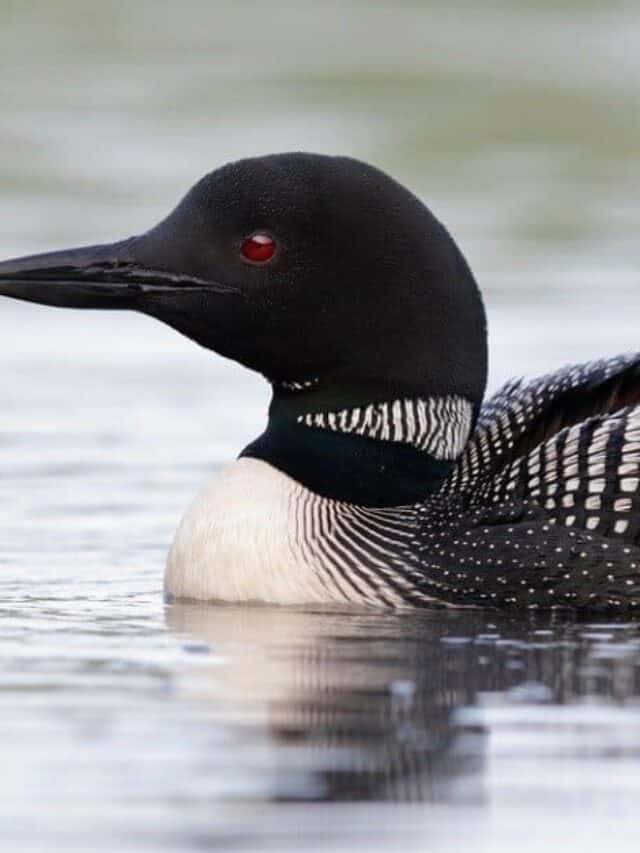Minnesota, also known as the “North Star State,” is a region that boasts of natural beauty and diversity. Nestled in the heartland of America, this state is home to vibrant communities and breathtaking landscapes. But what inspired its nickname? The answer lies in Minnesota’s unique geographical location: it sits at the northernmost point of the contiguous United States, making it an ideal spot for stargazing. Furthermore, Minnesota has a rich history tied to exploration and navigation, dating back to when French-Canadian fur traders mapped out the area centuries ago by following Polaris – commonly known as the North Star. Today, Minnesota remains a beacon of light for those seeking adventure or simply looking to connect with nature’s wonders, earning its reputation as one of America’s most beloved destinations. So come along on this journey and discover why Minnesota truly deserves its title as the “North Star State.”
Overview of Minnesota

Minnesota is known as the North Star State and land of 10,000 lakes.
©rarrarorro/Shutterstock.com
Minnesota is a state located in the north-central region of the United States. It’s known as the “Land of 10,000 Lakes” due to its numerous bodies of water and boasts a rich cultural heritage with strong Scandinavian influences. The state capital is St. Paul, but Minneapolis is the largest city and forms part of what’s known as the Twin Cities metropolitan area.
Minnesota’s economy has traditionally been based on agriculture, particularly wheat farming, but it now also includes manufacturing and services sectors such as healthcare and education. The state is home to several major companies, including Target Corporation, Best Buy Co., Inc., General Mills Inc., and many more.
In terms of attractions for visitors and residents alike, there are plenty of things to see and do in Minnesota. Outdoor enthusiasts can enjoy hiking trails through dense forests or fishing in one of many lakes, while music lovers can attend concerts at venues like First Avenue & 7th St Entry, made famous by Prince’s Purple Rain film, or at Paisley Park – his private estate turned museum that showcases iconic memorabilia from his career.
Overall, Minnesota offers something for everyone, whether you’re interested in exploring nature or immersing yourself in its vibrant cultural scene, making it an excellent destination for travelers looking for unique experiences that go beyond typical tourist destinations.
Why is Minnesota Called the North Star State?

Minnesota is the northernmost state in the lower 48.
©IM_photo/Shutterstock.com
Minnesota’s nickname, The North Star State, is derived from the state motto, “L’Étoile du Nord,” which means “The Star of the North” in French. This motto was chosen by Minnesota’s first governor, Henry Hastings Sibley, and was officially adopted in 1861, three years after Minnesota became a state.
The land that comprises modern-day Minnesota was once part of the Northwest Territory and lay at its northernmost section. Today, it remains the northernmost state in the contiguous United States. With such a unique geographical position and history behind it, it’s no wonder Minnesota has adopted this strikingly fitting motto.
One reason for this can be found within Ursa Minor (also known as Little Bear), a constellation visible year-round from most parts of the Northern Hemisphere. As Polaris (the North Star) is situated at its tip, sailors have long used Ursa Minor to navigate their way across oceans with great accuracy.
It comes as no surprise then that Polaris has played an important role in navigation throughout human history. Because Polaris always appears due north above Earth’s axis rotation axis, regardless of one’s location on Earth, travelers could use this star to orient themselves if they were ever lost or needed direction.
Minnesota residents take pride in being called The North Star State due to its historical significance and contribution towards helping those find their way home, both literally and metaphorically speaking!
Other Minnesota State Symbols
In addition to the state motto and nickname Minnesota has several other states symbols. Let’s explore a few of them below.
State Bird—Loon

Loons are excellent swimmers.
©iStock.com/BrianLasenby
The loon, also known as Gavia immer, is a water bird that became the official state bird of Minnesota in 1961. This majestic bird has a distinct appearance with its black and white checkered coloring on its back and head, red eyes and throat, and a long slender neck.
Loons are known for their haunting calls, which can be heard from miles away across lakes during the summer months when they migrate to Minnesota from their wintering grounds along the Gulf of Mexico or the Caribbean Sea. These calls have made them an iconic symbol of wilderness in northern regions.
One interesting fact about loons is that they are excellent swimmers but not so great at walking on land due to their legs being positioned far back on their bodies, making them awkward walkers. They spend most of their time diving into deep waters to catch fish or crustaceans for food.
Despite being protected by law in Minnesota since 1975, this beautiful bird remains threatened by habitat loss caused by human activities such as pollution and development near lake shorelines where they nest during the breeding season.
Overall, the loon’s unique characteristics make it an important part of Minnesota’s natural heritage and culture as well as a beloved state symbol cherished by residents and visitors alike.
State Fish—Walleye

Walleye is the state fish of Minnesota.
©GSDesign/Shutterstock.com
The walleye, also known as the Stizostedion vitreum or simply “pickerel,” is a freshwater fish that inhabits many of Minnesota’s lakes and rivers. It is a popular game fish among anglers due to its delicious taste and challenging catch. The walleye has a distinctive appearance with large, reflective eyes that help it see well in low light conditions – hence its name, “walleye.”
In addition to being an important part of Minnesota’s fishing industry, the walleye holds cultural significance for indigenous communities in the state. Native American tribes have long relied on this fish for food and medicine, and it continues to be an important part of their traditions today.
The designation of the walleye as Minnesota’s official state fish was made by the legislature in 1965. This recognition highlights not only the economic importance of fishing in Minnesota but also the deep connection between Minnesotans and their natural resources. As such, efforts have been made over the years to preserve populations of this iconic species through conservation measures such as size limits on catches and habitat restoration initiatives.
State Butterfly—Monarch

Monarchs breed in Minnesota and then migrate south for winter.
©Kate Besler/Shutterstock.com
The monarch butterfly, scientifically known as Danaus plexippus, was officially declared the state butterfly of Minnesota in 2000. This iconic insect is one of the most recognizable butterflies in North America and is renowned for its annual migration to Mexico. Every year, millions of monarchs travel up to 3,000 miles from their breeding grounds in Canada and the United States to overwintering sites in central Mexico.
Not only are these butterflies remarkable for their long-distance journeys, but they also play an important ecological role as pollinators. As adults, monarchs feed on nectar from a variety of flowers while inadvertently transferring pollen from one plant to another. During their caterpillar stage, they exclusively eat milkweed plants which contain toxic compounds that protect them from predators.
Unfortunately, monarch populations have been declining due to habitat loss and climate change. In response to this alarming trend, conservation efforts have been implemented across Minnesota and beyond. These initiatives include planting milkweed and other native wildflowers along roadsides and other public spaces, as well as reducing pesticide use.
State Bee—The Rusty Patched Bumblebee

The rusty-patched
bumblebee
is threatened by increased development (residential, commercial, industrial) and climate change.
©Taxomony/Shutterstock.com
The rusty-patched bumblebee, also known as Bombus affinis, is a species of bee that has recently been declared endangered. This bee was once commonly found across the eastern and midwestern United States, but populations have declined drastically in recent years due to habitat loss, pesticide use, and disease. In fact, the rusty-patched bumblebee is now one of the most critically endangered bees in North America.
Despite its small size (it measures only about 0.5 inches long), the rusty patched bumblebee plays an important role in our ecosystem as a pollinator. These bees are particularly good at pollinating plants such as tomatoes, blueberries, and cranberries, crops that are essential not only for our food supply but also for maintaining healthy ecosystems.
Minnesota’s decision to make the rusty patched bumblebee their state bee highlights both the importance of this species and the need to protect it from further decline. Raising awareness about this issue through initiatives such as designating a state insect or promoting native plant habitats that support these bees’ survival can help conserve them for future generations to enjoy.
The photo featured at the top of this post is © IM_photo/Shutterstock.com
Thank you for reading! Have some feedback for us? Contact the AZ Animals editorial team.






